Mastering the art of auto detailing steps is more than just a routine cleaning—it’s a comprehensive approach to preserving and enhancing the value and appearance of vehicles. This article draws from deep dives into successful detailing practices to equip your business with tactics that not only satisfy but delight your clients.

In today’s competitive market, setting your detailing business apart demands an unwavering commitment to quality and customer satisfaction. A critical fact—detailing does more than spruce up vehicles; it significantly contributes to maintaining their longevity and resale value.
Engage with this powerful guide for insights into transforming each detail job from standard to stellar. Discover why reading further might just be your next best business decision.. Your success story starts here.
Key Takeaways
- Always start with a thorough pre – wash, especially on the wheels, to prevent scratching.
- Use high – quality products like microfiber towels and clay bars for the best results.
- Follow the two – bucket method for washing to keep clean and dirty water separate.
- Polish before applying sealant for a glossy finish and better protection.
- Take time to dry thoroughly with soft microfiber towels to avoid marks or lint.
The Importance of Proper Auto Detailing Steps for Businesses
Proper auto detailing is key for automotive detail shops looking to shine. It’s not just about making vehicles look spotless. Detailing boosts a car’s appeal, pushing its value up and extending how long it lasts.
This edge means customers are more likely to come back and share their great experience with others. It’s a win-win: your shop gets known for premium service, and cars leave looking their absolute best.

Offering thorough detailing also distances you from the competition. Imagine a customer choosing between two shops — they’ll pick the one that promises and delivers exceptional results every time.
Using quality products like microfiber cloths, clay bars, and UV protection helps protect cars from road dirt, sun damage, and wear over time. So make sure you’re that go-to place where every vehicle gets the care it deserves, turning first-time customers into loyal fans — Not to be confused with Only Fans.
Step-by-Step Guide for Exterior Detailing
Master the art of making every vehicle shine with our guide on exterior detailing. Plunge into techniques that bring out the best in paint, wheels, and glass, ensuring your clients’ rides look their best.
Pre-Wash and Clean Wheels
Cleaning wheels first is key. Use a quality wheel cleaner and soft brush or microfiber cloth to tackle brake dust, dirt, and grime. Paying attention to lug nuts, wheel wells, and intricate designs on the wheels makes a big difference.
This step stops dirt from the wheels from getting onto the car’s body.
Properly cleaned wheels boost a vehicle’s look, impressing customers. Starting with the wheels helps ensure they get the focus they need without spreading dirt around all willy-nilly. It shows you care about every detail of their vehicle, making your service stand out.
Snow Foam and Two-Bucket Method Contact Wash
Mastering the snow foam pre-wash helps your business boom. It lifts dirt off with ease, making the next steps smoother. The two-bucket method then plays its part brilliantly. Use one bucket for soapy water and another for rinsing your wash mitt.
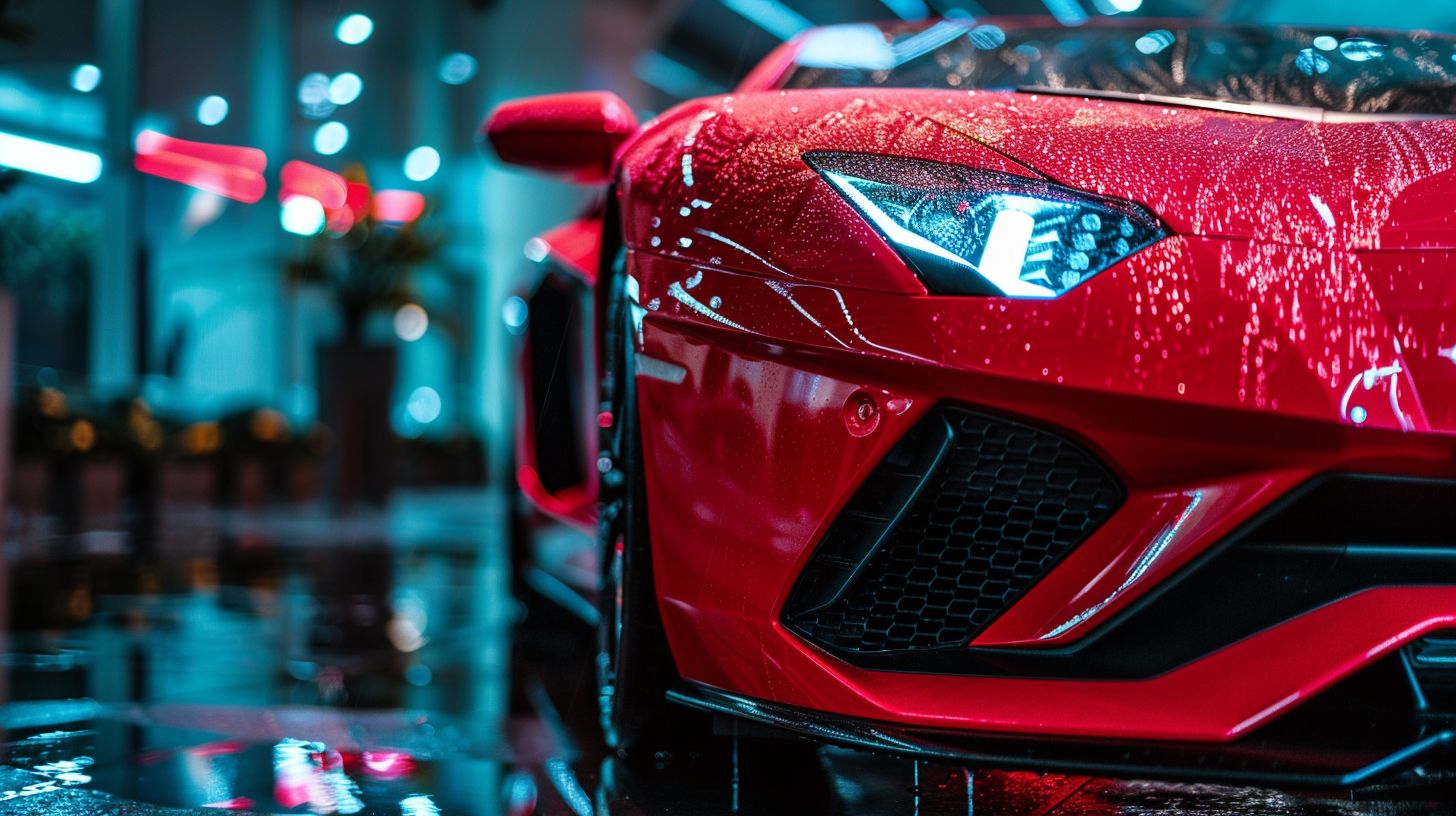
This smart move cuts down on scratches, keeping cars looking their best.
To apply it correctly, first cover the vehicle in a thick layer of snow foam. Let it sit to pull off the grime. After this, spring into washing with your two buckets ready. Dip your mitt in the soap, wash a section, then rinse the mitt in clean water before going back for more soap.
Repeat till you’re done, ensuring every inch shines without harm to the paintwork or leaving swirl marks behind.
Decontamination
Decontamination is a crucial step in making sure your customers’ vehicles shine and stay protected. After a thorough wash and dry, use a clay bar or chemical decontaminants like iron remover to pull out the tiny particles you can’t see with your eyes.
These contaminants stick to paintwork like shit sticks to a shoe and therefore need special care to remove. Working in a well-ventilated area ensures safety for everyone involved.
Next, applying paint sealant or wax is vital. This locks in the clean look and shields against future dirt and damage from UV rays. Your expertise in decontamination sets your detailing business apart, ensuring each vehicle isn’t just clean but truly cared for.
Drying and Polishing
Drying your vehicle right after washing is fundamental to avoiding water spots and streaks. Use a high-quality microfiber towel for the best results. This method gently pulls water off the surface, leaving it dry and ready for the next step.
Polishing then comes into play to tackle any imperfections on the paintwork. With the right polish and a dual-action polisher, you can smooth out scratches and restore shine, making the paint look new again.

For detailing businesses aiming to blossom, mastering these techniques is critical. Properly dried and polished vehicles not only show your attention to detail but also reflect your commitment to delivering top-tier service.
Clients notice these things, so always aim for perfection in every drying and polishing job you do.
Sealants and Protectants
Sealants and protectants are your car’s best friends. They shield the paint from harsh sunlight, dirt, and water. Think of them like sunscreen for your vehicle. This step is key to keeping cars looking shiny and new.

You’ll need to pick the right products — ceramic coatings, spray wax, or carnauba car wax work well. Each offers a durable layer against environmental harm.
Applying these products correctly matters a lot. Use the right tools and follow the product instructions closely. This ensures that the protective layer does its job for as long as possible.
Your customers will see their vehicles stay cleaner longer and the paint will resist damage better under this safeguarding armor.
Glass and Finalizing
Getting glass clean is essential for a sharp finish. Use the right products and methods to clear away streaks and smudges on windows and windshields. This step boosts visibility and gives your work a professional shine. Driving with a meticulously clean windshield literally feels like you’re driving a new car.
Finally, check over the vehicle carefully. Look for any small mistakes or areas you might have missed in previous steps. Fixing these tiny details sets your service apart, ensuring every part of the exterior looks its best before you call it done.
Step-by-Step Guide for Interior Detailing
Leap into our guide for interior detailing, where you’ll learn how to make the inside of any vehicle look and feel brand new.
Removing Odors and Refreshing Upholstery
Use an enzyme-based cleaner on upholstery and carpet to tackle odors. This method breaks down the smell at its source rather than just covering it up. After applying, give the vehicle a good vacuuming.
This ensures all loose dirt and particles that can hold smells are removed.
Next, bring in steam cleaning for a deeper refresh. It works wonders on fabric seats and areas tough to reach by hand. The heat from steam not only cleans but also kills bacteria, leaving the car smelling fresh.
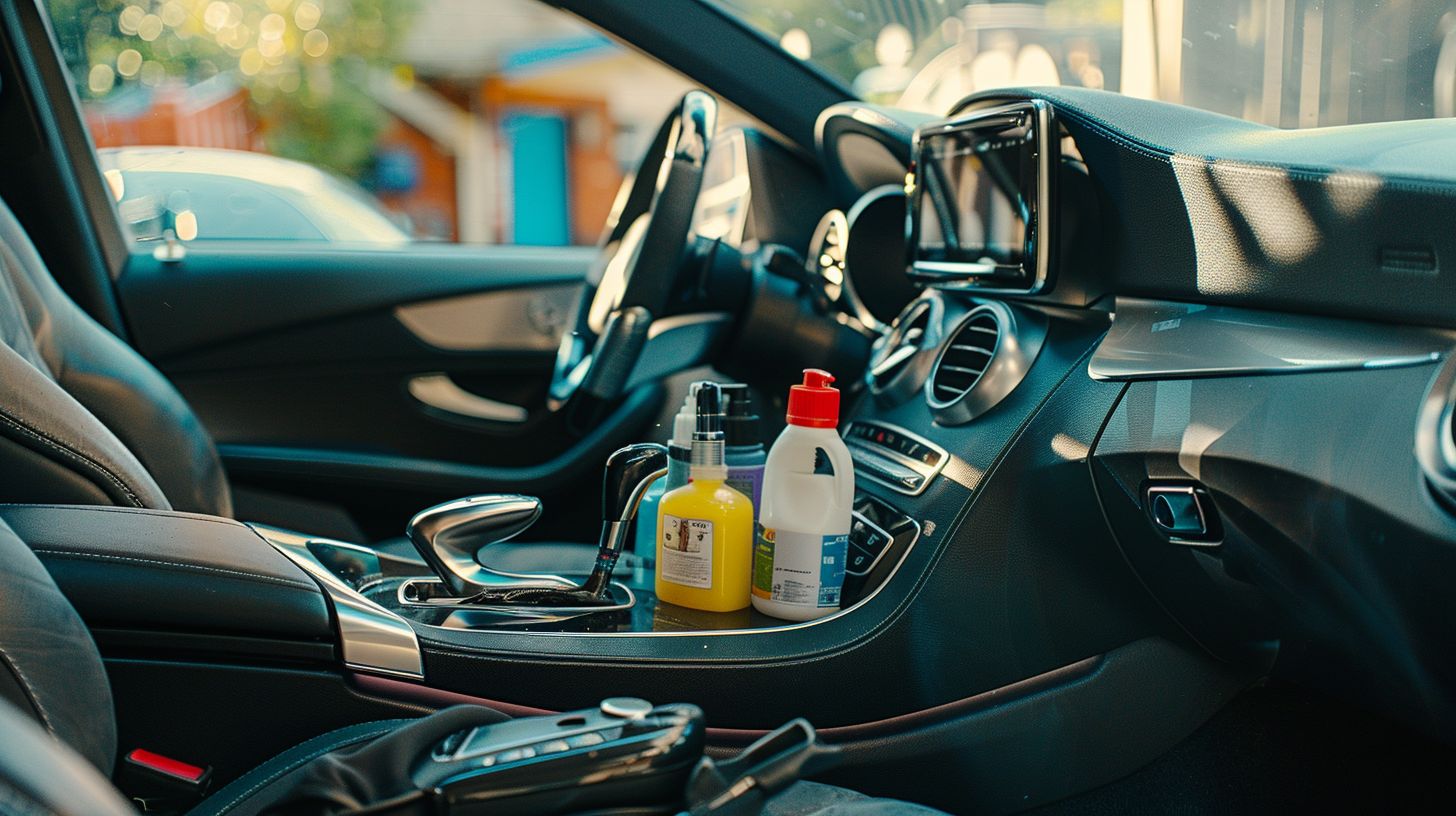
For leather seats, apply deep cleaning followed by conditioning to keep them looking new and odor-free. Finish off with a fabric refresher spray to maintain that clean scent longer.
Renewing Leather Seats
Renewing leather seats starts with a good clean. First, you need to pick the right cleaner for leather. Make sure it’s gentle yet effective. Use soft brushes and microfiber towels to avoid scratches or damage.
After cleaning, drying the seats is crucial before moving on to conditioning.
Conditioning brings back the softness and shine of leather seats. Choose a high-quality conditioner that does not leave greasy residues behind. Apply it evenly, then buff out any excess product with another clean microfiber towel.
This step ensures your customers’ seats are protected and look as good as new, offering a great service they’ll appreciate.
Cleaning Glass
Cleaning glass is indispensable to making a vehicle’s interior shine. First, grab a high-quality glass cleaner and a soft microfiber towel. Spray the cleaner directly onto the glass, covering it evenly.
Use circular motions with the towel to wipe away dirt and marks. This helps avoid streaks for that clear finish every client loves.
Next, tackle tough spots with more cleaner if needed. Switch to clean sections of your towel often to prevent smearing dirt around. Perfecting this skill boosts your business by impressing clients with spotless windows and mirrors inside their vehicles—showcasing attention to detail that sets you apart from others.
Engine Bay Care
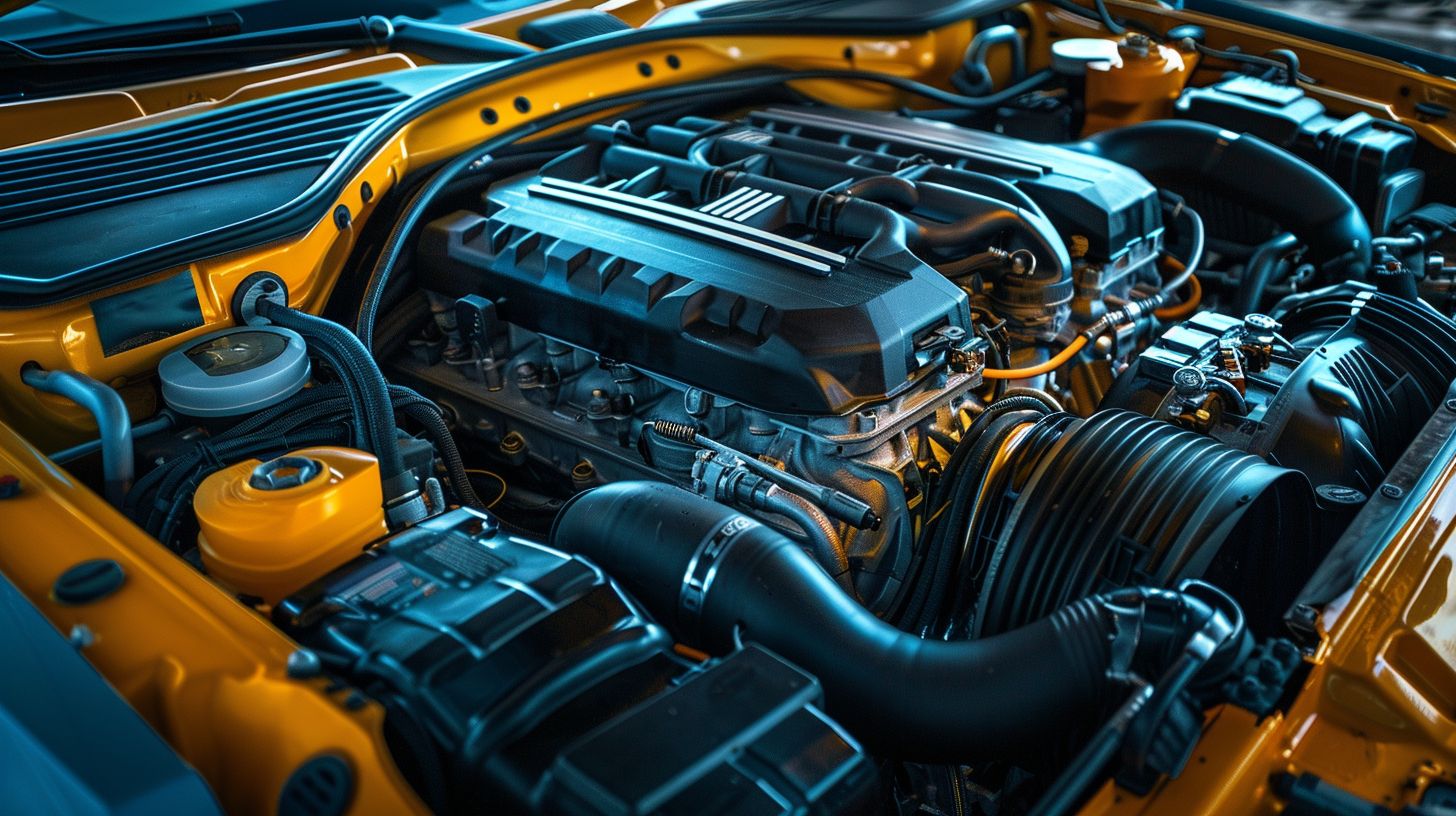
Engine Bay Care matters more than you might think. It’s all about cleaning and protecting this key area to keep your ride running smoothly.
Cleaning and Protecting
For the engine bay, start by getting rid of dirt and grime. This not only makes the vehicle look better under the hood, but also shields the engine. Use a gentle degreaser and avoid direct spraying on sensitive parts.
Then, apply protective products like engine dressings. These help prevent corrosion and keep components from wearing out too soon.
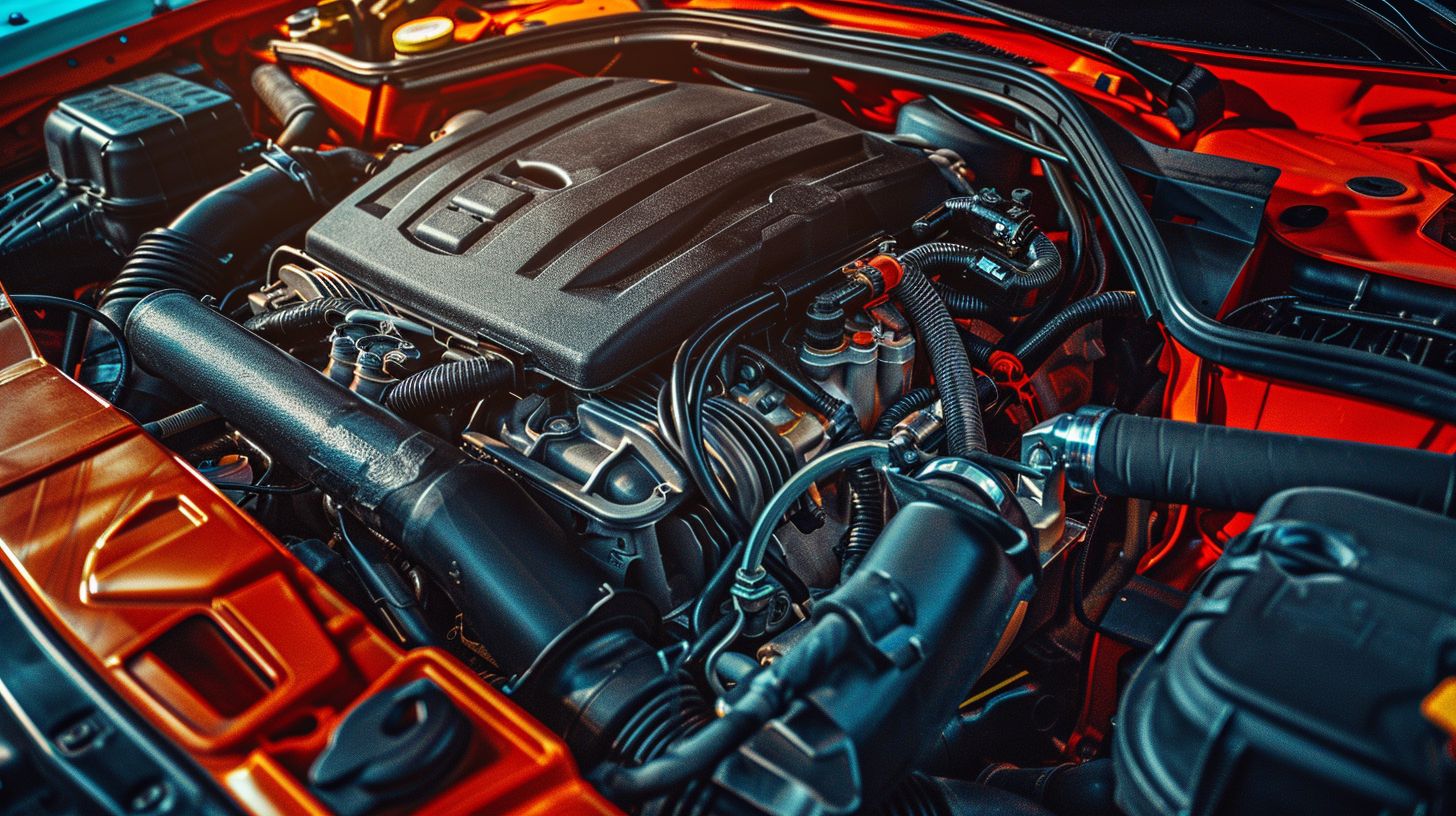
Keeping the engine bay clean boosts how your vehicle looks and helps it run well longer. It’s a step that adds value to your service, showing customers you care about every detail.
Recommended Products and Tips for Finding the Best Supplies
Choosing the right products and supplies can make a huge difference in your detailing work, so read further to discover top tips and essentials you need to elevate your game.
Detailing Basics
Getting your basics right in auto detailing can make a huge difference. Investing in high-quality products is important to getting those professional results you’re after. From the right car shampoo for exterior washing to the best degreasers for tough grime, each product plays a pivotal role.
Customer reviews and value for money should guide your choices here.
Essential supplies like microfiber towels, abrasive pads for paint correction, and detailing clay for a smooth finish are must-haves. Also, don’t forget about protection – using paint sealants and UV protectants helps keep vehicles looking good as new.
Always aim to offer the best by choosing wisely and focusing on quality over quantity.
Must-Have Supplies
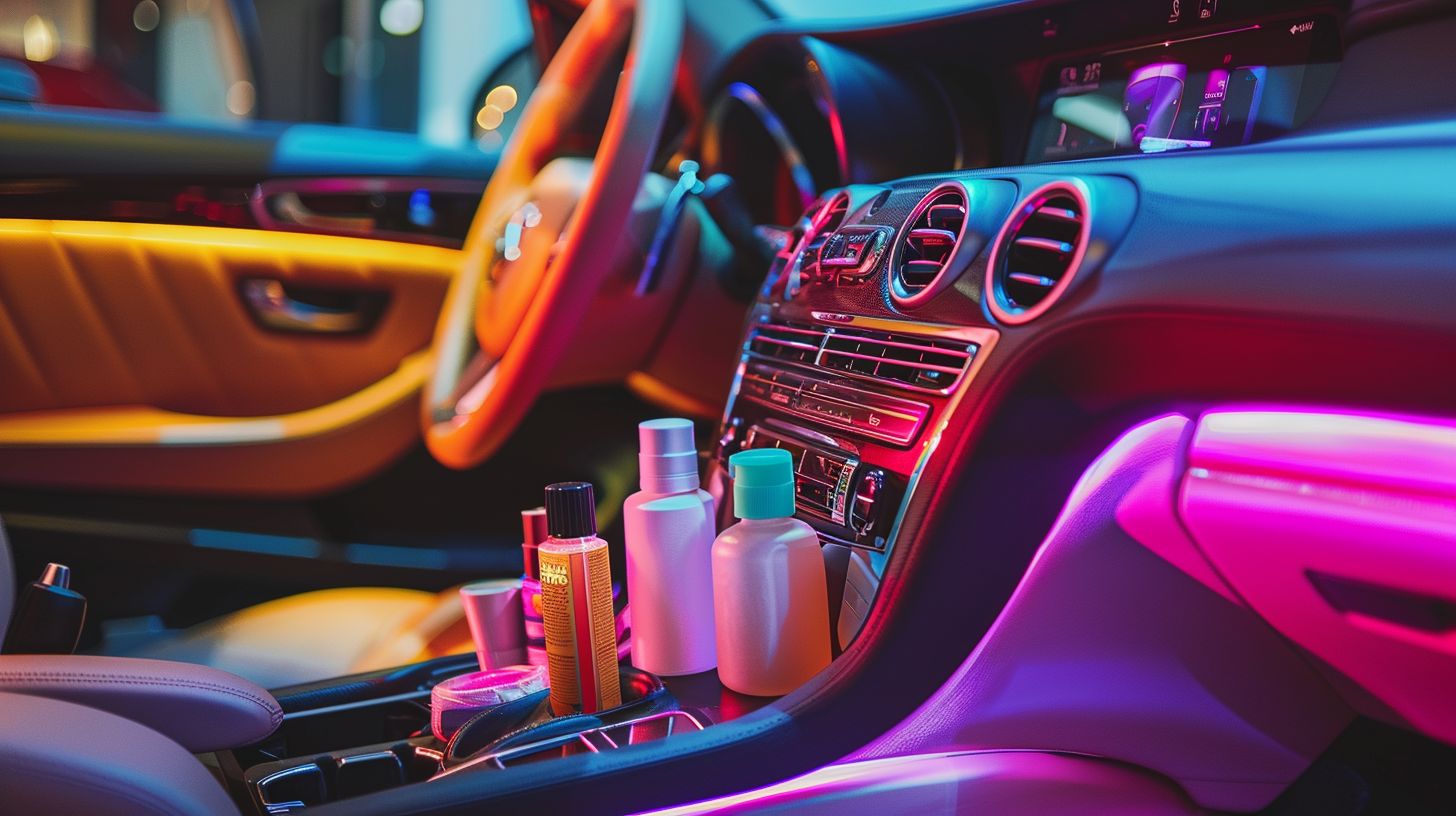
High-quality supplies are crucial for mastering auto detailing. Picking the right tools and products can set your business apart.
- Microfiber Towels: These towels are a game-changer for drying and polishing. They don’t scratch surfaces, making them perfect for all types of cars, including crossovers, minivans, and SUVs.
- High-Quality Car Wash Soap: This soap is designed to lift dirt gently without harming paint or finishes. It’s essential for starting each detail job right.
- Clay Bars: A key step in preparing the surface for waxing or sealing. They remove embedded contaminants like tar and sap without damaging the paint.
- Dual-Action Polisher: Saves time and gives a uniform finish when polishing or waxing vehicles. Ideal for both new and used cars to bring out their best look.
- Quality Car Wax or Sealant: These protect the car’s finish from UV rays and other elements, keeping it looking new longer.
- Tire Dressing: For that finishing touch, tire dressing makes tires look new and protects against cracking and fading.
- Tar Remover: Sometimes washing alone isn’t enough; tar remover helps get rid of stubborn spots safely.
- Compressed Air & Vacuum Cleaner: Compressed air drives dust out of tight spaces while a powerful vacuum cleans up interiors quickly.
- Chemical Decontamination Products: Safe removal of iron particles and more without harming the auto’s surface is paramount for maintaining a vehicle’s look over time.
- UV Protectant For interior surfaces: Dashboard, leather seats, etc., need protection from UV light to prevent fading or cracking.

Choosing the Right Towels
Microfiber towels stand out as the best choice for auto detailing. Their high absorbency, softness, and gentleness protect surfaces from scratches. Each task, whether drying, buffing, or cleaning different parts of vehicles like sedans, coupes, or hatchbacks benefits from a specific type of towel.
Consider GSM – grams per square meter – when selecting them. A higher GSM indicates a thicker towel which is perfect for absorbing water.
Choosing the correct size and edge of the towel is also key. Large towels work well for drying because they cover more area quickly. For delicate tasks such as polishing headlights or working on matte finishes and protection from UV rays, choose towels with softer edges to avoid damage.
This attention to detail ensures your work stands out in the competitive world of auto detailing.
Real Cost of Pro Detail Jobs

Understanding the real cost of professional auto detailing jobs goes beyond just the price tag on supplies. It’s about recognizing the value and the long-term benefits that come from using premium products. High-quality detailing products may come with a higher upfront cost, but they assure superior results. This, in turn, justifies the investment and sets your detailing business apart in a competitive market.
Let’s break down the costs and considerations in a clear, straightforward manner:
| Cost Factor | Description | Impact on Business |
|---|---|---|
| Quality of Products | Using premium products leads to better results, but costs more upfront. | Enhances client satisfaction and vehicle longevity, justifying the initial investment. |
| Long-Term Benefits | Superior products extend the duration of the detail, reducing the need for frequent services. | Builds client trust and loyalty through lasting results, driving repeat business. |
| Tools and Equipment | Investing in high-grade equipment increases efficiency and effectiveness. | Reduces labor time while improving service quality, optimizing profit margins. |
| Training and Expertise | Skilled technicians can maximize the potential of premium products and tools. | Enhances service offerings and allows for premium pricing, increasing revenue. |
| Overall Perception | Using quality products elevates the brand and differentiates the business. | Attracts a higher-end clientele willing to pay more for superior service. |
This table highlights the crucial elements that contribute to the real cost of professional auto detailing jobs. Each aspect, from the selection of superior supplies to the expertise of your team, plays a significant role in defining the total value provided to your clients. Keep in mind, investing in quality not only elevates the vehicles you work on but also the standing of your business in the eyes of your clients.

Avoiding Common Mistakes
Auto detailing is an art and science. Picking the right products and following the right steps ensures your clients’ vehicles shine without harm. Let’s slide into how to avoid common mistakes in the thorough process of cleaning and maintaining cars.
- Skipping pre-wash can push dirt around, scratching the surface. Always start with a thorough pre-wash, especially on wheels which are dirt magnets.
- Using one bucket for washing and rinsing mixes clean and dirty water, leading to potential damage. The two-bucket method keeps things separate and safe.
- Not using snow foam before a hand wash misses a chance to lift off tough grime effortlessly. Snow foam acts as a gentle pre-cleaner, making your job easier.
- Forgetting decontamination allows contaminants to bond with the paint. Use clay bars or chemical decontaminants regularly to keep surfaces smooth and prepared for further treatment.
- Rushing drying or using wrong materials can leave marks or lint. Take time to dry thoroughly with high-quality, soft microfiber towels for a flawless finish.
- Skipping polish before sealant means missing out on that extra gloss. Polishing removes small imperfections, allowing sealants to provide better protection.
- Applying sealants too thickly or unevenly results in streaks and an uneven shine. Apply thin layers evenly for best protection and appearance.
- Neglecting glass leaves visibility less than perfect and affects overall detail quality. Clean glass last to remove any overspray from other detailing steps.
- Overlooking odors instead of removing them invites dissatisfaction. Use specific cleaners or machines designed for odor removal for fresh interiors.
- Not conditioning leather seats shortens their life span due to drying out or cracking over time—condition leather regularly with appropriate products.
- Using aggressive cleaners can damage engine parts or finishes. Choose gentle, suitable cleaners and protectants designed for engine bays.
- Going cheap on supplies might save money upfront but may lead to costly damages later. Invest in quality products verified by auto care professionals. Cheap is often expensive.
Conclusion
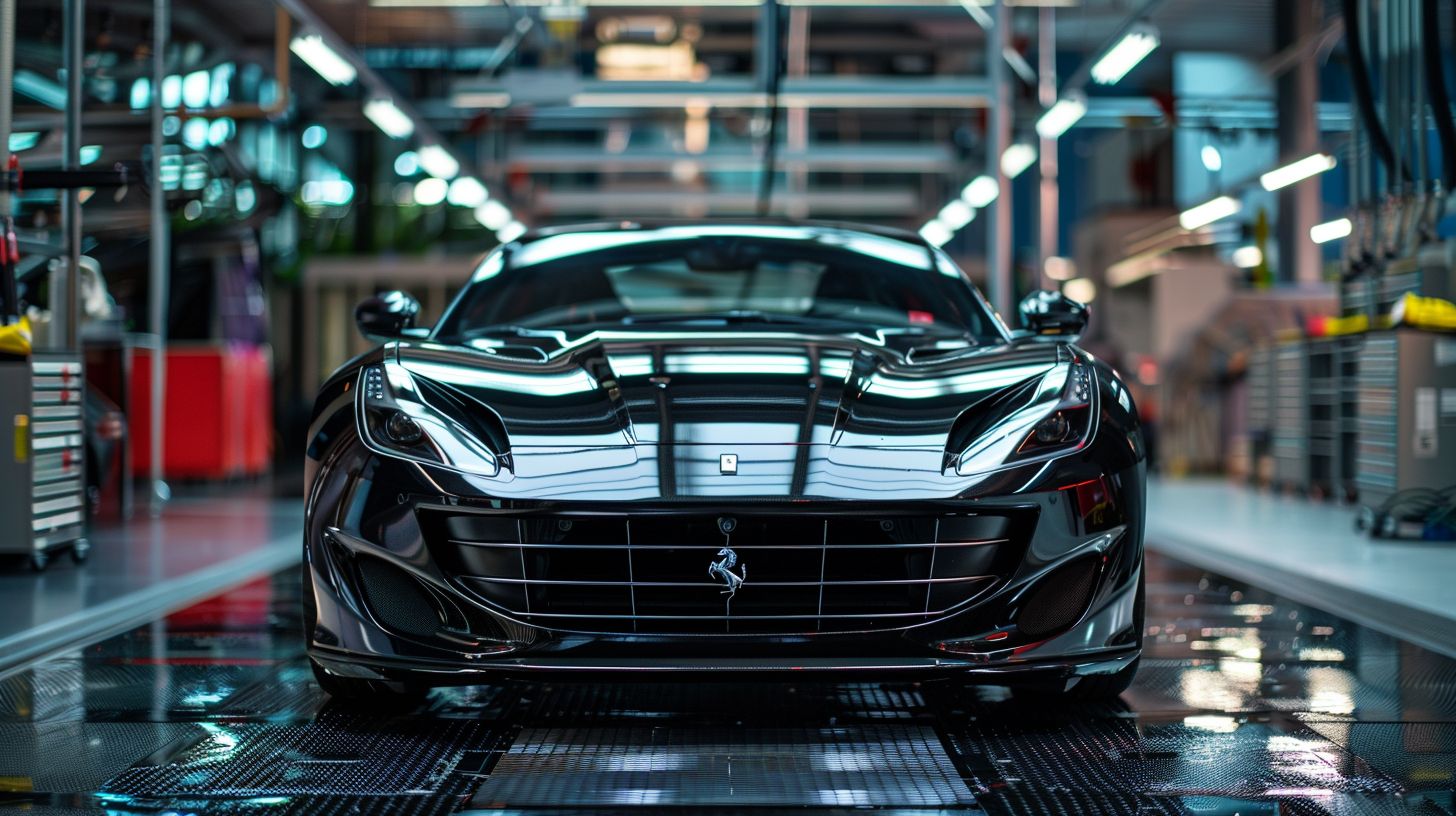
Mastering auto detailing steps sets your business apart. It shows your dedication to quality and detail. With the right techniques, products, and knowledge, you’ll keep customers returning and recommending your shop.
Your reputation for excellence grows as you hone these skills. Stay ahead in this fast-growing industry by embracing best practices in vehicle care.
FAQs
1. What’s the first step in auto detailing?
Start by giving the car a good hand-wash. This means using water, soap, and some elbow grease to clean every part of the vehicle, including those hard-to-reach spots.
2. Can I use any soap for washing cars?
Nope! You should use special soap made just for vehicles. Regular dish soap can harm your car’s paint.
3. What comes after washing?
Dry the vehicle with a soft towel or cloth. Then, it’s time for claying – this pulls out all the tiny bits stuck in your car’s paint.
4. How do I make my client’s car shine like new?
After claying, apply polish and then wax. These steps help protect the paint and make their car look shiny.
5. Should I worry about cleaning inside parts too?
Yes! Clean inside areas with a wet-dry vacuum and remember to wipe down surfaces gently to avoid scratches.
6. Are there special steps for different types of cars?
Indeed! Electric cars might need extra care around their batteries while hybrid models have specific instructions too – always check the manual or ask an expert if unsure.


